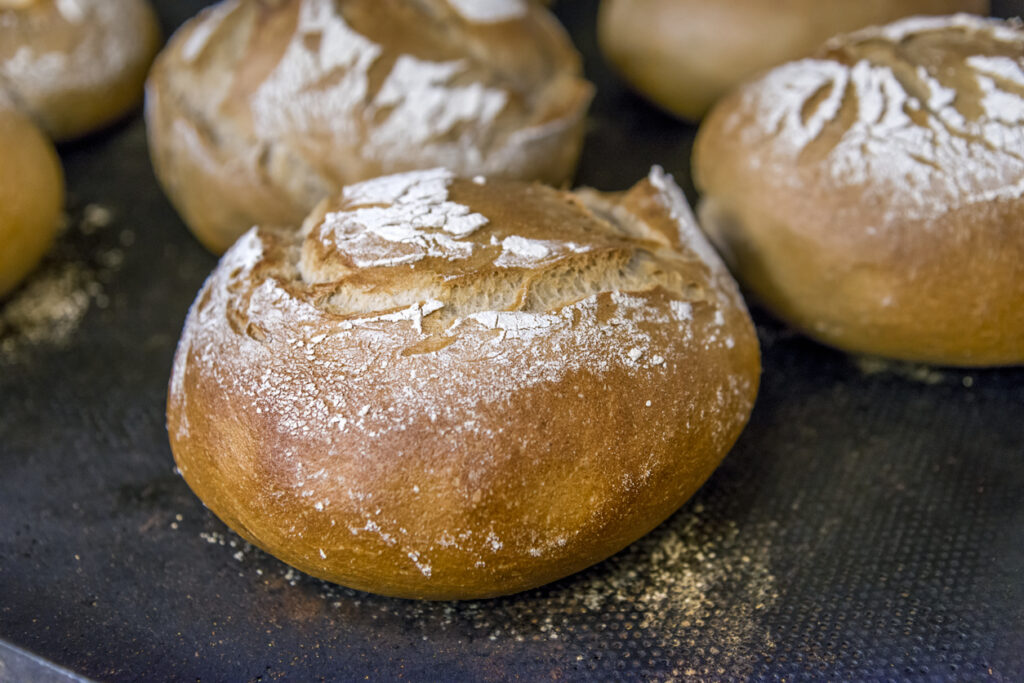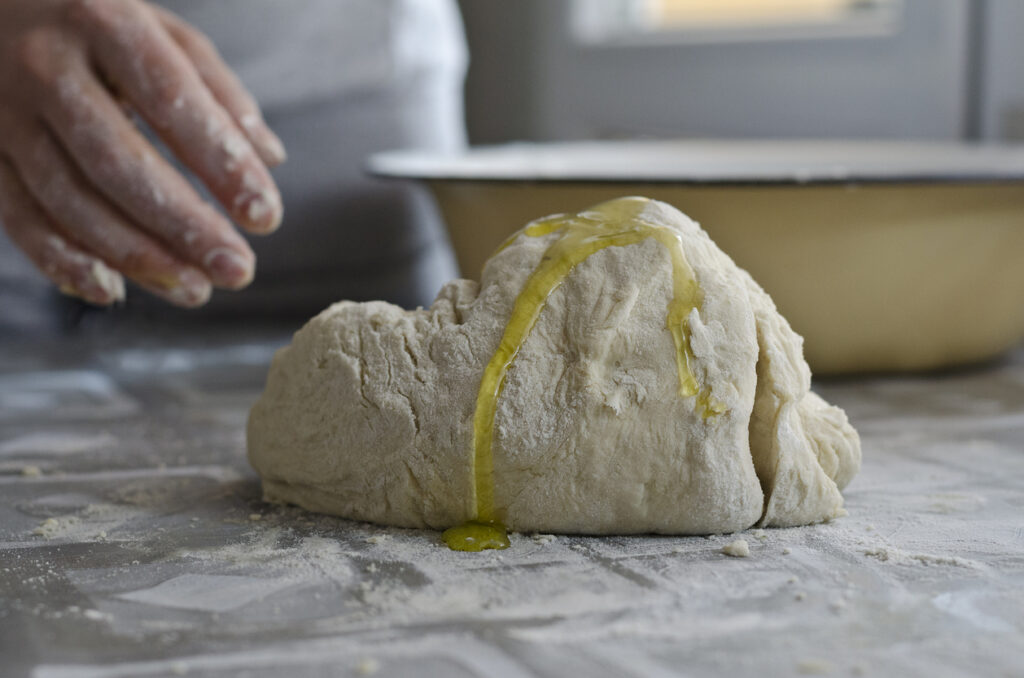- General
Bread sauce on toast, ancient Tuscan bread, baking with lava and ice

If you ever doubted that bread sits at the centre of human life, all you need to do is check Google News. There’s a constant stream of bread creativity, bread tips, and sheer bread madness. Here are some of our favourite bread stories from the past couple of weeks.
Dom Joly confesses his bread sauce obsession
Comedian Dom Jolly says he cooks Sunday roast for one reason and one reason only: so he can make bread sauce, which he’s obsessed with. So far, so good. But we’re not sure about his habit of eating leftover bread sauce , a cold substance with a texture like wallpaper paste, spread on toast the next day…
The lesser of two evils – A handy onion slicing tip
The sulfoxides in onions naturally cause eye irritation, making them water. Apparently placing a piece of bread in your mouth while you slice onions stops the tears. When you chew the bread you’re letting the sulfoxides into your mouth instead of in your eyes or up your nose, and while it can make your mouth water at least you won’t be blinded by tears. We presume you need to chew the bread with your mouth open, which we were taught as children not to do, but hey, who’s watching?
Tuscan bread’s long and ancient history
One popular Tuscan bread has been on the menu since Roman times. If a recipe lasts more than two thousand years you can rely on it being pretty tasty. So what’s all the fuss about?
Tuscan bread is made without salt and comes with a noticeably sponge-like texture and a crusty shell, given a Protected Designation of Origin label in 2016.
Salt is usually a must in bread and there are various theories around why there’s no salt in the Roman recipe. Some say it’s because Tuscan cuisine can be pretty salty, which the un-salted bread balances out, others say it was because salt was once taxed so heavily most ordinary people couldn’t afford it, and it naturally fell out of use.
Want super-soft bread with a crisp crust? Use lava and ice
Perfect home-baked bread requires lava rocks and ice.
Who knew? Lava rock is formed during volcanic activity. It’s light, full of holes, and comes in irregular shapes that give it an enormous surface area. This means it heats up super-hot then holds onto the heat for a very long time.
You can steam-bake bread by putting lava rocks in a wide, shallow pan or dish inside a pre-heated oven at a temperature of 180 – 230C, leaving the lava to absorb the heat for 20 minutes.
Immediately before putting the bread in the oven, throw in a few chunks of ice. The violent burst of steam you get is pretty dangerous but that’s what you need for a crispy crust. It envelops the bread, which bakes a bit faster than usual thanks to the steam.
How leftover sourdough bread makes fabulous pasta
The chef Albert Franch Sunyer at Helsinki’s world-famous Nolla restaurant makes pasta from leftover sourdough. We like his style. He uses leftover bread in all sorts of creative ways, from cheese crackers to crumbles to ice cream, on the understanding that bread is made from flour so can be turned back into flour.
Sunyer lets the bread dry out naturally in the kitchen rather than an oven, minimising the amount of energy used. He can make bread pasta with eggs but because so many of the restaurant’s customers are Vegan these days, it’s usually made with water instead. Passed through the pasta machine a few times to get the perfect result, the resulting wholemeal bread pasta comes with a strong nutty flavour.
Taking leftovers a bit too far
NHS surgeon and TikTok health expert Dr Karan Raj says the fuzzy stuff on the surface of mouldy bread is just the tip of the iceberg. The grey-green fuzz is actually the reproductive organs of the sporangium, which send out zillions of tiny spores that ‘spread everywhere’.
If bread is mouldy in one area it’ll have spores throughout, along with hidden roots called haifa inside the bread.
While some moulds, like antibiotics and the moulds you get on blue cheese, are pretty handy, others are a health risk. The mould in bread is one of the nasty ones, often harmful, but there’s no way to tell if it’s dangerous until you fall ill thanks to the potentially lethal mycotoxins it produces.
His advice? “just throw the damn mouldy thing away.”
Samples of super-fresh flash frozen artisan breads
Ask and we shall make it so. Click the button below for a free sample box of artisan breads fresh from our wholesale bakery in Kent.



